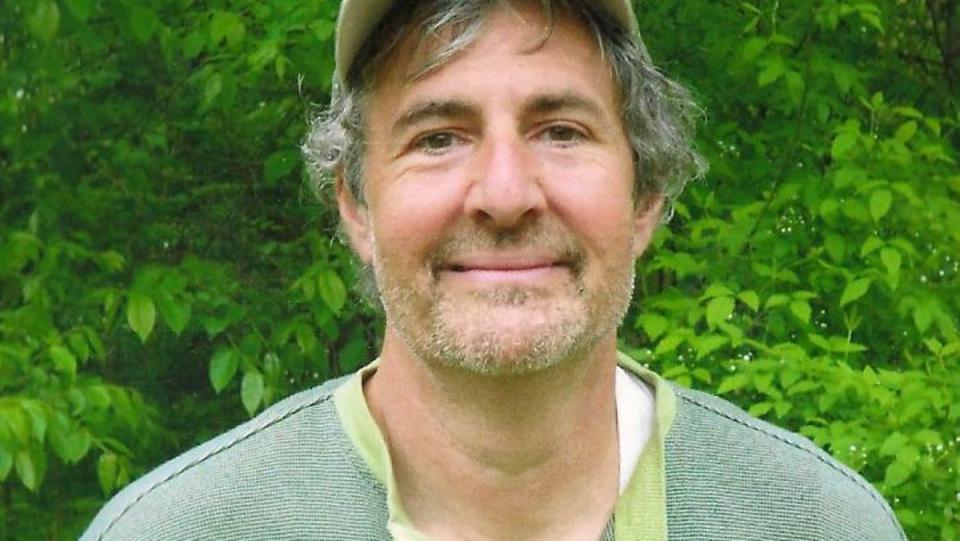David Weintraub: Developing a love for nature early on
Biophilia is the idea that humans are naturally fascinated with nature from an innate, biologically-driven need to interact with other forms of life such as animals and plants. However, when we’re no longer a child we’re told its time to be ‘practical’. It's fine to like nature, so long as it’s kept confined, like in a zoo. But as mature adults nature must be subservient to human rules.
My child discovered nature early in life. Every weekend we visited a nature preserve, an aquarium, or took a walk in the park. Before he learned to talk, he learned baby sign language for duck and cat. He could distinguish a copes grey tree frog (the one that makes the loud snoring sound), a wood frog (that quacks like a duck) and a green frog (that twangs like a loose guitar string) at three. He caught his first king snake (the kind that eats venomous snakes like copperheads and timber rattlesnakes) before he was five. He spent years with me observing sea turtles laying their eggs along beaches in South Carolina, Georgia and Florida, so much so that he knew everything about their life cycle and habits.
Because we had a pond and a stream crossing the property, we were able to identify at least a dozen different species of reptiles, amphibians and mammals on our land and we studied their behaviors and learned how they interacted. We even identified two types of animals that had never been established in Henderson County before, the mole salamander and the corn snake.
My son learned to love and respect nature from growing up with nature, learning that we weren’t put here on earth to dominate and control, but to live side by side with the critters of the earth. And as a result, we had a special obligation to be their steward.
We could have easily killed the copperheads we found on our property but what lesson would that have taught? That we’re the big bad humans and we’re in charge? Since copperheads do a wonderful job keeping down the rodent population and since the copperheads we found did not interfere with our daily life, we learned to live with them. (Note: there are no aggressive venomous snakes in North America.) The lesson I hoped to teach was the value of living with our animal neighbors and that we didn’t have to be the only predator on the block.
Carl Safina, the nationally acclaimed wildlife ecologist discusses in one of his books how when young families are expecting their children, they don’t paint skyscrapers on the walls of their nursery, or cubicles or cell phones. Instead, we paint animals to welcome our children into this beautiful world and to take joy in the other creatures that make it a wonderful place. Of course, many of those animals twirling around in our baby’s mobile or are part of their stuffed animal menagerie are animals whose existence is seriously in doubt because they are either on the brink of extinction or threatened. We rarely ask ourselves what effect our actions have on nature before we build another development, mine more essential minerals, or clear-cut our forests.
Maybe when we introduce our children to our beautiful world with the depictions of the sacred natural world, we can also teach them that the future of our natural world is in our hands. That wasn’t always the case, but it certainly is now. How do we show the love? We start with the small stuff. Maybe we start off with not exterminating every dandelion and clover that grows in our garden with toxic chemicals that runoff into our streams and harm local wildlife. Before it became generally known how toxic Roundup was, scientific studies had proven that frog and toad populations were seriously endangered, an essential part of our ecosystem wherever glyphosate was used.
Coexistence means compromise. Yards that look like golf courses tend to also have the negative attributes of golf courses; namely they are carcinogenic to ourselves and to the wildlife around us.
When I see a toad, a fox, a purple martin, a black bear, I stand in awe. Together we live widely intersecting lives with our animal brethren and it’s up to us, the smartest and yet most destructive of earth’s creatures to live simply, so they can simply live. If we lose them, we haven’t just lost a sacred one of God’s creatures. We’ve also lost a bit of ourselves as well. How tragic it would be to give our grandchildren stuffed animals of pandas, blue whales or snow leopards as epitaphs for creatures that we’ve driven to extinction.
David Weintraub is a cultural preservationist, filmmaker and local environmental troublemaker who runs the Center for Cultural Preservation. Contact him at SaveCulture.org or 828-692-8062.

This article originally appeared on Hendersonville Times-News: David Weintraub: Developing a love for nature early on

